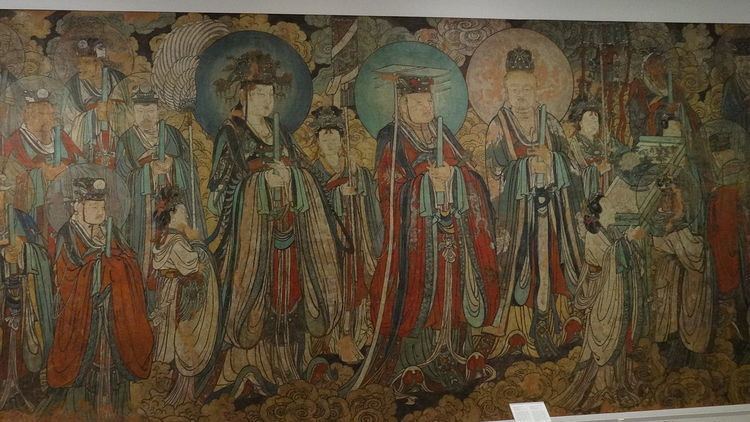 | ||
The Daoist wall painting "Homage to the Highest Power" is a prime example of Daoist paintings in the ROM collection. The painting was created during the late Empire I of the Yuan Dynasty, c. 1271 – 1368 AD. The painting is colored pigments mixed with clay and plaster. It measures 306.5 cm high and 1042 cm in length. This painting is similar to those found in Sanqing Hall of the Yongle Monastery in Shanxi province. The Sanqing Hall paintings are dated by an inscription to 1325 AD. Based on the strong stylistic affinities, this work can also be dated to the Yuan dynasty (AD 1279–1368).
Contents
Daoist Imagery
Homage to the Highest Power is a popular theme in Daoist pictorial art. Daoist theology advocates the concept of Dao (the Way), a primeval force which gives form to all things in the universe. Homage to Dao is expected of all regular followers of Dao.
Description
The wall painting is one of a pair from the Pingyang region of southern Shanxi province. This work was created as decoration for the west wall of a temple hall or worship space. It is symmetrically balanced leading your eye first to the central figures and then fanning out on either side. It shows a procession of heavenly beings moving at a leisurely pace to pay homage to the Supreme Power.
The procession is led by a fierce warrior, the Lord of the Southern Dipper (Sagittarius). He leads nine star spirits, female attendants with plant offerings, three important deities, and personifications of the twelve Terrestrial Branches. The three deities have been identified as Laozi (founder of Daoism) with the Jade Emperor and the Empress of Heaven, or Laozi with the Holy Ancestor and Ancestress of the Song Dynasty (AD 960-1279).
